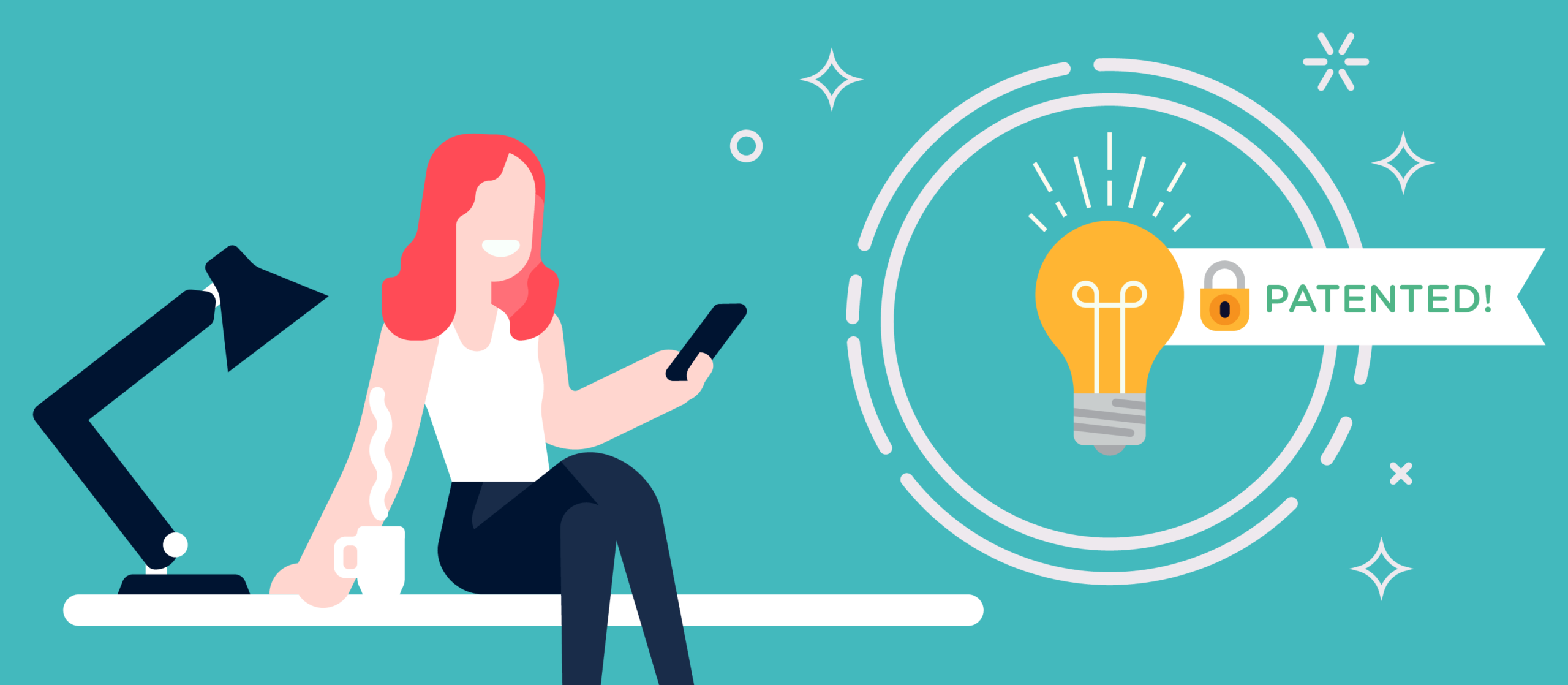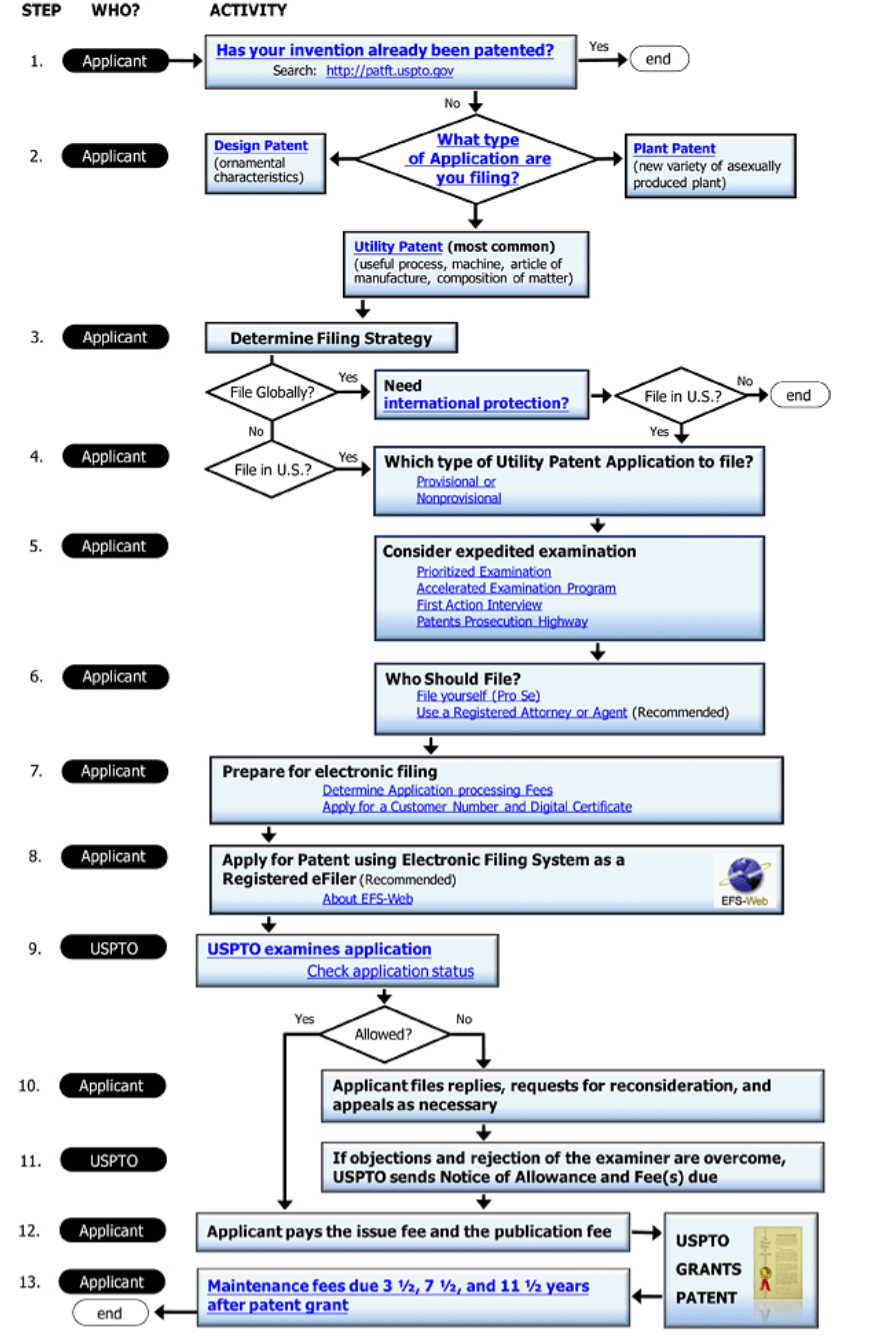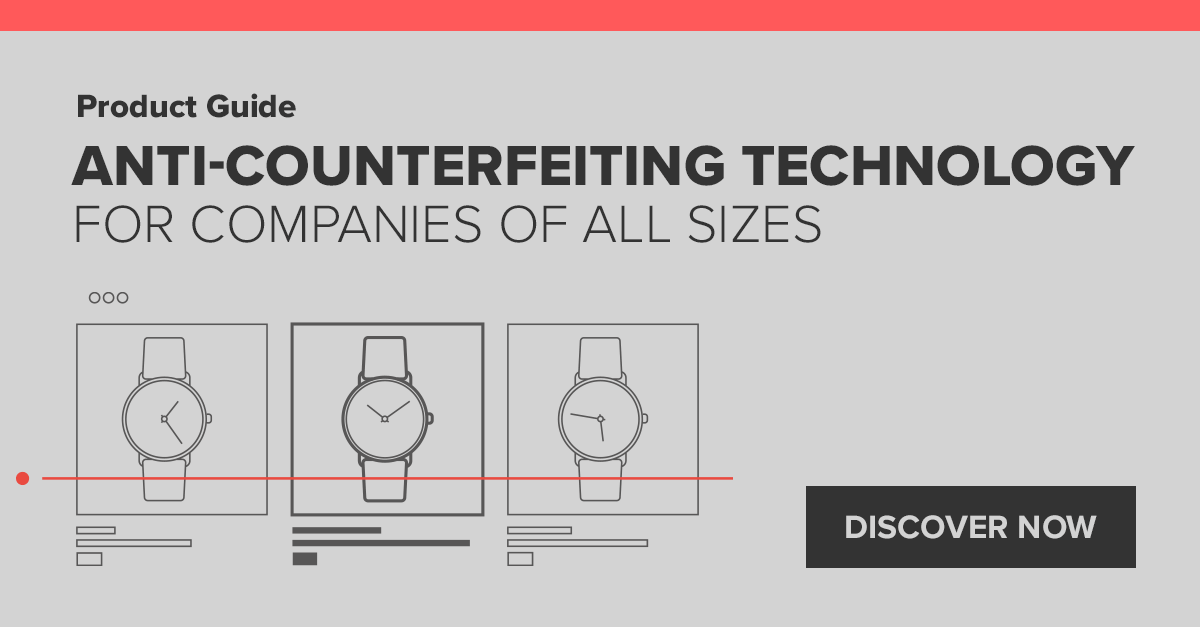
Table of Contents:
Last updated on: March 28, 2024
Red Points’ comprehensive guide for helping brands worldwide to obtain patent protection in the United States.
Summary
In this article, we will take a look at:
A patent is a grant of a property right to an inventor issued by the United States Patent and Trademark Office (USPTO). A utility patent is a patent that protects novel, non-obvious and useful process, machine, article of manufacture, the composition of matter or improvements thereof.
While a utility patent can protect the way an article functions and/or method of using the article, in contrast, a design patent only protects the ornamental appearance for an article, such as its shape, configuration or surface ornamentation applied to an article.
A utility patent gives the patent owner “the right to exclude others from making, using, offering for sale, or selling the invention throughout the United States or importing the invention into the United States.” 35 U.S. Code § 154 (a) (1).
According to 35 U.S.C. § 101, to be patent eligible, first, the claimed invention must belong to at least one of the four categories: processes, machines, articles of manufacture and compositions of matter.
The Manual of Patent Examining Procedure (MPEP), which is published by the USPTO, in § 2106.03, provides useful definitions for each of the four patent eligible categories:
Second, the claimed invention should not be directed to a judicial exception, such as an abstract idea, law of nature or a natural phenomenon, unless the claimed invention, as a whole, amounts to significantly more than the exception.
The Supreme Court has stated that granting patents to inventions primarily directed to these exceptions would impede innovation rather than promote it because these exceptions “are the basic tools of scientific and technological work.” See Alice Corp. v. CLS Bank, 134 S. Ct. 2347, 2354 (2014); Mayo Collaborative Servs. v. Prometheus Labs., Inc., 566 U.S. 66, 71 (2012). See also MPEP § 2106 for a detailed discussion of the judicial exceptions.
The following flow chart provided by USPTO, and reproduced from MPEP § 2106 III, provides a quick overview of the steps involved in determining what can be patented, as discussed above:

Finally, in order to be patent eligible, the claimed invention must also be useful, that is, have a specific, substantial and credible utility. See MPEP § 2107 for a detailed discussion of the utility requirement.
A mere idea or suggestion is not patentable; only inventions can be patented. An easy way to distinguish mere ideas from inventions is to ask whether the enablement requirement of patentability is fulfilled, that is, can a person of ordinary skill in the art make and use the innovative concept without engaging in undue experimentation? A mere idea or suggestion would not be enabling to one of ordinary skills in the art.
To get a utility patent, the applicant must ensure that the claimed subject matter of their invention:
Prior to filing a patent application with the USPTO, it is advisable that applicants at least perform a preliminary patentability search using the USPTO patent database to search for previously filed U.S. patent applications similar to their inventions for assessing novelty and non-obviousness.
The applicants may choose to widen the scope of their search and use global patent databases such as PatentScope or Google Patents, which searches foreign patent applications and international applications in addition to the U.S. patent database. Applicants may even use search engines such as Google or Google Scholar to identify any similar prior art that are not patent applications.
On the other hand, the downside of performing an extensive search is that the applicant would need to disclose any relevant prior art identified to the USPTO. Therefore, some applicants may prefer to do a more preliminary search prior to filing the utility patent application.
The cost of obtaining a utility patent is highly variable because it depends on variables such as complexity of the application, attorney and paralegal fees, number of claims in the application, number of pages in the application, extensions of time obtained at the USPTO for responding to Office Actions during prosecution, etc.
The USPTO fees are lower for small and micro-entities. See 37 C.F.R. § 1.27 and 37 C.F.R. § 1.29 for definitions of small and micro entities, respectively. A list of the USPTO patent filing, search, examination, and post-allowance fees can be found here.
If the costs of filing and prosecuting a standard utility patent application, also known as a non-provisional patent application, seems prohibitive and the inventors would like to do further work before deciding whether or not to pursue a patent, a good option is to file a provisional patent application.
A provisional application gives the applicant the benefit of an earlier priority date and the option to decide whether or not to file a non-provisional application a year from the date of filing of the provisional application.
One year after the provisional patent application is filed, the applicant must file a non-provisional patent application, otherwise, the application would go abandoned. Unlike a non-provisional application, a provisional application does not need to comply with the patentability requirements described above, or even have any claims, because a provisional application is never examined.
However, if the applicant decides to file a non-provisional application claiming priority to the provisional application, the provisional application must provide adequate written description and enablement for the claims in the non-provisional application to avail the benefit of the earlier priority date. Therefore, the best practice is to file a provisional application that complies with all the patentability requirements outlined above.
If the utility patent does not claim priority to an earlier-filed application, the patent term of a utility patent is twenty years from the date the application for the utility patent was filed in the United States.
If the utility patent claims priority to earlier-filed U.S. non-provisional application or an international application, the patent term for such a utility patent is twenty years from the date of filing of the earlier-filed U.S. non-provisional application or international application.
It is important to note that if a utility patent claims priority to a U.S. provisional application, the patent term of the utility patent is still twenty years from the date the non-provisional application for the utility patent was filed in the U.S., not twenty years from the date of filing of the provisional application.
Additional patent term may also be granted as patent term extension or patent term adjustment for delays caused during patent examination at the USPTO or regulatory delays caused by agencies such as the Food and Drug Administration (FDA). See MPEP §§§ 2710, 2733 and 2750 for a detailed discussion of patent term extension and patent term adjustment.
To successfully sue for patent infringement, a patent owner would have to show in court that the other party is making, using, offering to sell, or selling the patented invention in the U.S., or importing into the U.S. any patented invention during its patent term without authority.
Patent infringement is determined on a claim-by-claim basis, that is, the patent owner only needs to show that each and every element of a patent claim is present literally or equivalently in the accused party’s product or method. A showing of infringement does not require a showing that all claims in the patent are being infringed.
The following are some defenses to patent infringement that the accused party can present:
